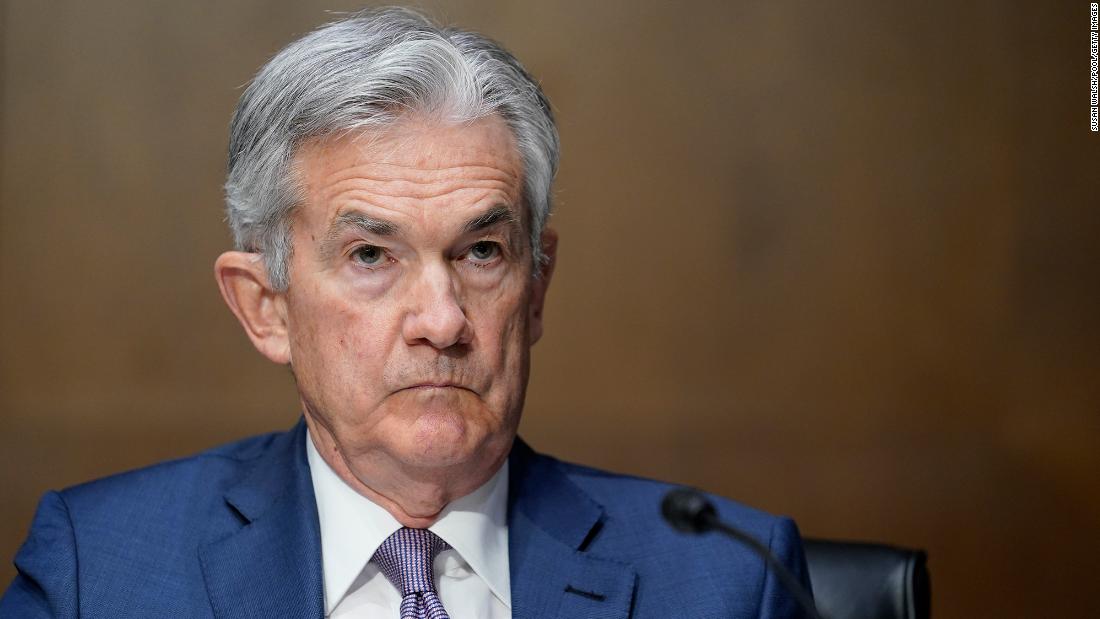Fed Chair Jerome Powell Speaks at Jackson Hole – Here is What You Should Know
23.08.2024 17:11 2 min. read Alexander Stefanov
Federal Reserve Chair Jerome Powell is taking the stage with his speech at the highly anticipated Jackson Hole Economic Symposium at the moment.
Known for his cautious approach and careful language, Powell’s remarks provide crucial insights into the Fed’s next moves. The financial world has been on edge, waiting for a much-needed rate cut after a prolonged period of high interest rates. Investors, in particular, are hoping for at least a 0.5% reduction in September.
This sentiment has intensified following the recent market turmoil, which wiped out $2 trillion from the stock market in a single day, sparking panic and increasing demands for decisive action from the central bank.
The event comes just after the U.S. Bureau of Labor Statistics revised job growth figures downward by 818,000, the largest adjustment since 2009. This suggests a weakening job market, which, alongside easing inflation, could influence the Federal Reserve’s upcoming decisions on interest rates.
Powel stated, that the after effects from the pandemic are almost gone and inflation has declined significantly. Aditionally, the labor market is no longer overheated.
Fed’s chair stated that their job is not finished, but they are making progress as the current monetary policy eased inflation and is closer to the objective of 2%.
He also says that his confidence has grown with the recent data. The Fed is not looking for further cooling in labor market conditions and the economy continues to grow at a stable pace.
Despite this, Powell stated that the downside risk of employment has increased and that the timing of rate cuts will depend on future data.
He is confident that the inflation could go down to 2% while having a strong labor market.
-
1
U.S. Government Shutdown Stalls Key Jobs and Inflation Data
03.10.2025 16:03 2 min. read -
2
Political Battles Overshadow America’s Growing Fiscal Crisis
13.10.2025 10:00 2 min. read -
3
U.S. Faces Another Shutdown Showdown as Deadline Nears
30.09.2025 15:30 2 min. read -
4
US Shutdown: Here is When it Could Finish According to Polymarket
06.10.2025 18:00 3 min. read -
5
Wall Street’s New Crystal Ball: Why Bank Earnings Are Critical Amidst Economic Uncertainty
12.10.2025 23:00 3 min. read
Political Battles Overshadow America’s Growing Fiscal Crisis
The latest deadlock in Washington over a partial government shutdown highlights a recurring pattern: political posturing often overshadows the country’s more pressing financial challenges.
Wall Street’s New Crystal Ball: Why Bank Earnings Are Critical Amidst Economic Uncertainty
The usual deluge of economic data that guides Wall Street has run dry, interrupted by an ongoing federal government shutdown.
Markets Jittery as U.S.-China Trade Spat Revives Uncertainty in Global Supply Chains
Tensions between the United States and China have flared again after President Donald Trump imposed steep tariffs on Chinese goods, prompting a measured response from Beijing.
U.S. Consumer Confidence Holds Steady Amid Mixed Economic Signals
The latest University of Michigan survey shows U.S. consumer sentiment largely unchanged, with the index at 55.0, slightly above economists’ expectations of 54.2. September’s reading was 55.1, indicating little shift in household outlooks.
-
1
U.S. Government Shutdown Stalls Key Jobs and Inflation Data
03.10.2025 16:03 2 min. read -
2
Political Battles Overshadow America’s Growing Fiscal Crisis
13.10.2025 10:00 2 min. read -
3
U.S. Faces Another Shutdown Showdown as Deadline Nears
30.09.2025 15:30 2 min. read -
4
US Shutdown: Here is When it Could Finish According to Polymarket
06.10.2025 18:00 3 min. read -
5
Wall Street’s New Crystal Ball: Why Bank Earnings Are Critical Amidst Economic Uncertainty
12.10.2025 23:00 3 min. read
Federal Reserve Chair Jerome Powell has hinted that U.S. banks may soon see more flexibility when it comes to handling digital assets—a notable shift from the cautious approach regulators have maintained in recent years.
The Federal Reserve has trimmed interest rates by 0.25 percentage points, initiating a new easing cycle after more than a year of restrictive policy.
The Federal Reserve's November 6-7 meeting is expected to determine the course of interest rates, with key inflation and employment data likely shaping the outcome.
Jerome Powell and the Federal Reserve are facing significant pressure from the market, with investors betting on an imminent rate cut following recent inflation reports.
A top official from the U.S. Federal Reserve is pushing for new legislation that would allow traditional financial institutions to issue stablecoins backed by the U.S. dollar.
After wrapping up a two-day policy meeting, the Federal Reserve left its benchmark rate unchanged near 4.4 percent—exactly what markets had penciled in.
At its May 7, 2025 meeting, the Federal Reserve left the federal funds rate unchanged at 4.25% to 4.50%, marking the fourth consecutive decision to keep rates steady.
The Federal Reserve has decided to keep interest rates unchanged, opting for caution as it monitors inflation and the economic impact of President Donald Trump’s early policies.
The Federal Reserve's balance sheet expanded by $2 billion this week, reaching a total of $7.2 trillion.
Federal Reserve Governor Michelle W. Bowman recently announced that it is too early to consider cutting interest rates in 2024.
Despite investor hopes, the Federal Reserve is unlikely to implement substantial rate cuts in the near future.
The Federal Reserve is expected to approach rate cuts cautiously in 2025, with plans to end its quantitative easing cycle by mid-year, according to Bill Adams, chief economist at Comerica Bank.
The U.S. Federal Reserve has placed stablecoins at the center of its latest policy discussions, highlighting the tokens’ potential impact on financial stability and their role under the newly enacted GENIUS Act.
Neel Kashkari, president of the Federal Reserve Bank of Minneapolis, recently expressed skepticism about the practical use of cryptocurrency.
The Federal Reserve has reduced interest rates for three consecutive months since beginning its rate-cutting cycle in September.
Dan Tapiero, a seasoned macro investor and hedge fund manager, sees potential for a significant Bitcoin surge if the U.S. economy hits a downturn that pushes the Federal Reserve toward aggressive rate cuts.
Although inflation showed limited improvement in November, futures contracts for federal funds suggest a nearly certain 25 basis point rate cut at the Federal Reserve's meeting on December 17-18, according to analyst Megan Leonhardt.
Richmond Fed President Thomas Barkin shared an optimistic outlook for the U.S. economy heading into 2025, highlighting potential growth despite uncertainties tied to the policies of the new Trump administration.
Experts warn that a potential interest rate cut by the Federal Reserve could lead to a significant drop in Bitcoin's price, contrary to many traders' expectations.
The latest US Consumer Price Index (CPI) report shows July's inflation rate dropping to 2.9%, just below the expected 3%.


